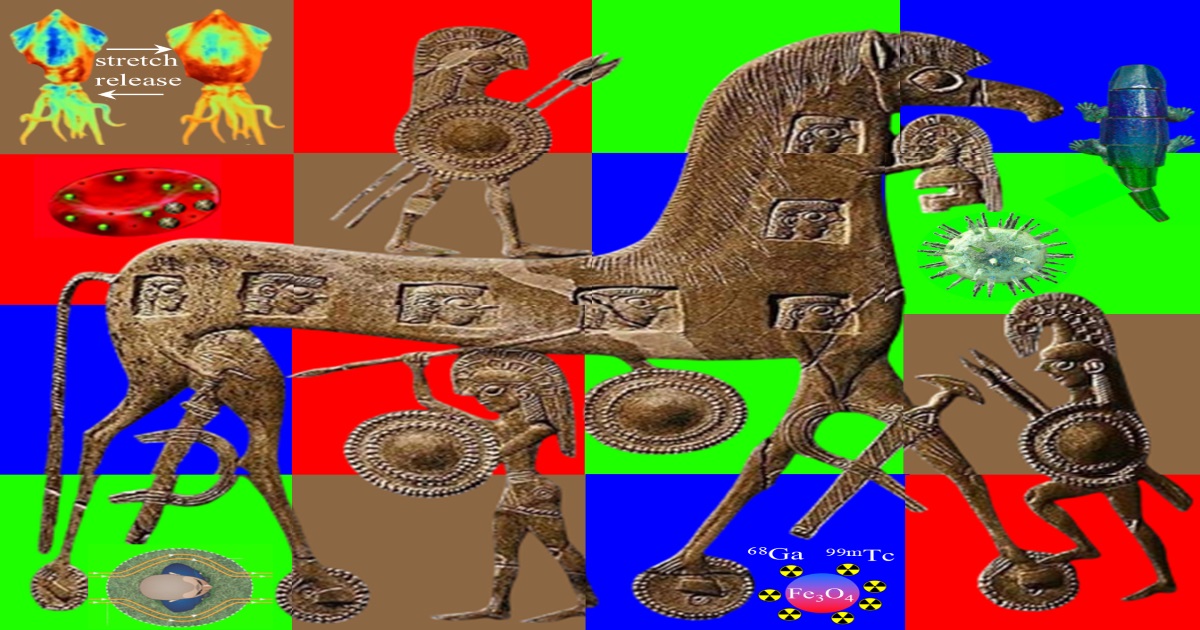Trojan Materials in Science, Technology and Biomedicine: Invisibility Leading to Success
A special issue of Materials (ISSN 1996-1944). This special issue belongs to the section "Materials Physics".
Deadline for manuscript submissions: 20 July 2026 | Viewed by 159

Special Issue Editors
Interests: strongly correlated electron systems; magnetic nanostructures, techniques and devices for biomedical applications
Interests: metamaterials; nanophotonics; plasmonics; slow and stopped light
Interests: soft matter; liquid crystals; interface phenomena; phase transitions; critical phenomena
Interests: magnetic and radio-labeled nanoparticles in diagnostic and therapeutic biomedical applications; hemocompatibility
Special Issue Information
Dear Colleagues,
Natural and artificial materials commonly behave as ‘Trojan horses’ to efficiently protect their cargo from being detected by any outside observer. Probably the most popular paradigm comes from the visible spectrum of electromagnetic radiation and relates to the biochemically complex mechanism of camouflage; some living organisms, for instance chameleons, have the property to adapt the absorption/emission pattern of their skin to that of the surrounding environment. A less known paradigm originates from the immunology of the microworld; specific pathogens, for instance viruses, can biochemically remodel their surface to deceive physiological cells, thus recruiting them as host carriers to invade the living organism. Science, when biomimetic, greatly benefits from this; relatively simple and quite complex materials such as photonic crystals, magnetic and dielectric micro/nano-particles, plasmonic nanomaterials and liquid crystals, can be farther empowered through their combination with biological substances and cellular units on demand, for the construction of new kinds of artificial (bio)metamaterials. This Special Issue is dedicated to artificial (bio)metamaterials which succeed thanks to their invisibility (electromagnetic, thermal, biochemical and immunological), and are thus termed Trojan materials. Electromagnetic invisibility cloaks, thermal cloaks, and immunologically nonresponsive magnetic and dielectric agents for diagnostic and therapeutic biomedical applications are based on photonic crystals, magnetic and dielectric micro/nano-particles, plasmonic nanomaterials, and liquid crystals, in pristine form or combined with biological substances and cellular units. These categories, and other relevant ones, are considered in this Special Issue.
Dr. Dimosthenis Stamopoulos
Dr. Kosmas Tsakmakidis
Dr. Lelidis Ioannis
Dr. Maria Karageorgou
Guest Editors
Manuscript Submission Information
Manuscripts should be submitted online at www.mdpi.com by registering and logging in to this website. Once you are registered, click here to go to the submission form. Manuscripts can be submitted until the deadline. All submissions that pass pre-check are peer-reviewed. Accepted papers will be published continuously in the journal (as soon as accepted) and will be listed together on the special issue website. Research articles, review articles as well as short communications are invited. For planned papers, a title and short abstract (about 250 words) can be sent to the Editorial Office for assessment.
Submitted manuscripts should not have been published previously, nor be under consideration for publication elsewhere (except conference proceedings papers). All manuscripts are thoroughly refereed through a single-blind peer-review process. A guide for authors and other relevant information for submission of manuscripts is available on the Instructions for Authors page. Materials is an international peer-reviewed open access semimonthly journal published by MDPI.
Please visit the Instructions for Authors page before submitting a manuscript. The Article Processing Charge (APC) for publication in this open access journal is 2600 CHF (Swiss Francs). Submitted papers should be well formatted and use good English. Authors may use MDPI's English editing service prior to publication or during author revisions.
Keywords
- electromagnetic invisibility cloaks
- optical invisibility cloaks
- thermal invisibility cloaks
- immunological invisibility cloaks
- metamaterials
- biometamaterials
- biomimetic camouflage
- multi-spectral camouflage
- immune camouflage
- immune non-responsive diagnostic agents
- immune non-responsive therapeutic agents
Benefits of Publishing in a Special Issue
- Ease of navigation: Grouping papers by topic helps scholars navigate broad scope journals more efficiently.
- Greater discoverability: Special Issues support the reach and impact of scientific research. Articles in Special Issues are more discoverable and cited more frequently.
- Expansion of research network: Special Issues facilitate connections among authors, fostering scientific collaborations.
- External promotion: Articles in Special Issues are often promoted through the journal's social media, increasing their visibility.
- Reprint: MDPI Books provides the opportunity to republish successful Special Issues in book format, both online and in print.
Further information on MDPI's Special Issue policies can be found here.









